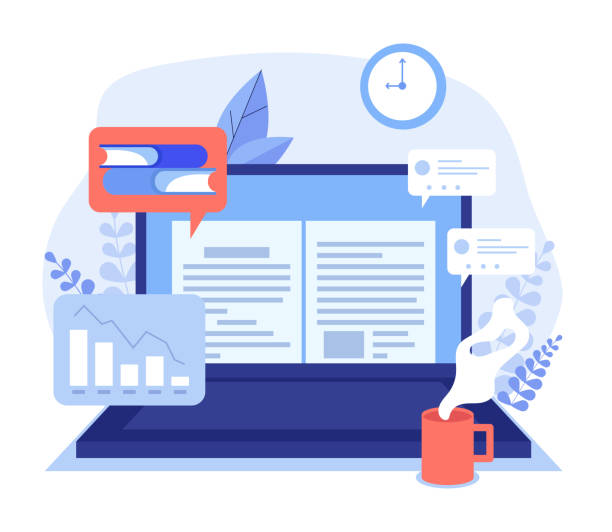Introduction to Personal Website Design: Why Do You Need It?
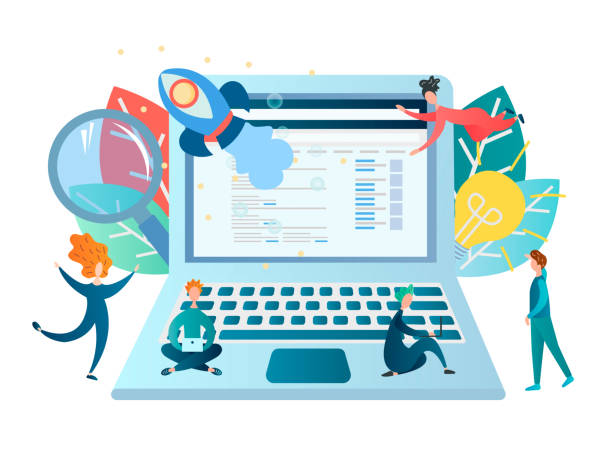
In the current digital age, having a powerful online presence has become more important than ever.
#Personal_website_design allows you to build your digital identity, showcase your skills, and connect with a wider audience.
A personal website is not just your virtual storefront, but also a platform for sharing your thoughts, projects, and achievements.
This process, namely personal website design, is a fundamental step towards establishing your personal and professional brand in the online space.
Many people mistakenly believe that presence on social networks is sufficient for this purpose, but a personal website provides complete control over your content, design, and data.
This independence is invaluable.
Unlike social platforms that have their own rules and algorithms, your website belongs to you and you can customize it exactly according to your goals and preferences.
A personal website is a powerful tool for storytelling and creating a deeper connection with your target audience. This is a fundamental explanation of what an individual website is and its importance, which paves the way for understanding the next steps.
With this platform, you can build your online resume, showcase your portfolio, or even launch a personal blog that reflects your thoughts and expertise.
The importance of designing a personal website in today’s world is no longer hidden from anyone, and this article will help you address this topic with a more comprehensive view.
Does your current e-commerce website design lead to losing customers and sales?
Rasawab is your solution with modern and user-friendly e-commerce website designs!
✅ Significant increase in conversion rates and sales
✅ Strong branding and building customer trust
⚡ Get a free consultation for e-commerce website design from Rasawab!
Countless Benefits of Having a Personal Website: The Power of Branding and Networking
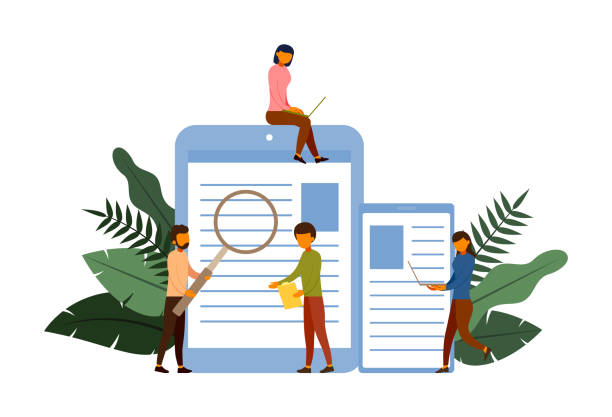
Have you ever thought about how you can distinguish your resume from dozens of others or showcase your expertise in the best possible way to potential employers or clients? The answer lies in personal branding and having a dedicated website.
Personal website design is a strategic investment in your professional career future. This platform gives you the opportunity to create a professional and reputable online presence that goes beyond a social media profile.
By having a website, you can not only showcase your portfolio in an attractive and organized manner, but also narrate your professional story and show your audience who you are and what values you offer.
This analytical and somewhat thought-provoking content makes you wonder why you haven’t paid attention to this powerful tool until now.
Networking benefits are also enhanced through a personal website; you can include contact forms, newsletter subscriptions, and links to your social media to establish new connections.
Additionally, a personal website allows you to share your expertise through articles, blog posts, and educational content, which establishes you as an authority in your field.
This process of building a personal site is a bridge between you and countless opportunities available in the digital world.
In fact, a strong website is the foundation of any successful personal branding strategy that allows you to have complete control over narrating your story.
Strategic Planning for Your Personal Website: Content and Structure
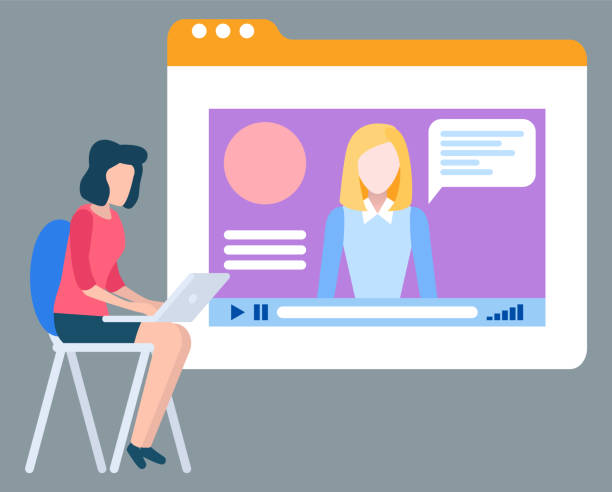
Before proceeding with personal website design, there’s a crucial step: strategic planning.
This specialized stage involves defining website goals, identifying the target audience, and designing the content structure.
Without a clear roadmap, your website may seem aimless and fail to reach its full potential.
The first step is to answer this question: What is the purpose of building this website? Do you intend to share your online resume? Showcase your portfolio? Launch a personal blog? Or perhaps you are looking to attract clients for your services? After defining the goal, it’s time to understand your audience.
Who is your website being designed for? Knowing this will help you choose the right content and tone.
Next, it’s time to design the website’s structure or information architecture.
This guidance includes defining the main pages (such as About Me, Portfolio, Contact, Blog) and how they relate to each other.
For this purpose, a simple sitemap can be designed.
Below is a guide table for the main planning elements:
| Element | Description | Example |
|---|---|---|
| Website Goal | What you want the website to achieve. | Showcasing portfolio, attracting clients, blogging |
| Target Audience | Who will visit your website? | Employers, potential clients, students |
| Content Structure (Sitemap) | Main pages and how information is organized. | Home, About Me, Resume, Portfolio, Contact |
| Content Type | What kind of information will you provide? | Text, images, video, PDF files |
This detailed planning helps you to have a clear path for designing and developing your personal website and prevents waste of time and resources.
Considering these elements from the beginning lays the foundation for a successful web presence.
Choosing the Right Platform for Your Personal Website Design: Tools and Options
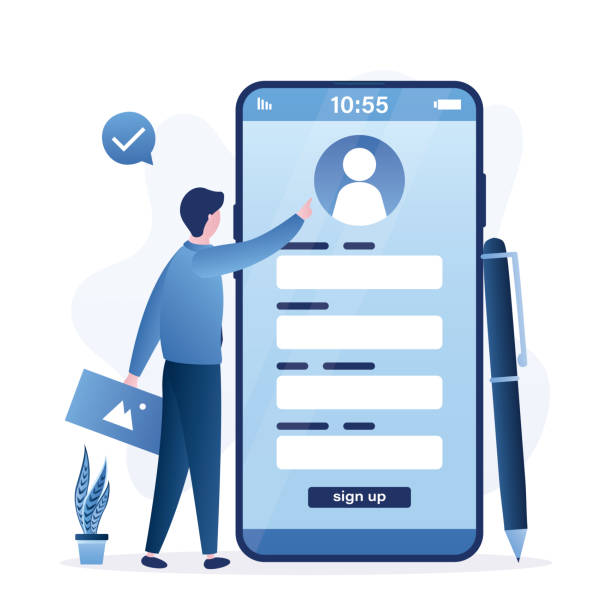
After strategic planning, the next step in personal website design is choosing the right platform or tool.
This choice depends on your technical knowledge, budget, and goals.
There are numerous options for building a personal website, each with its own advantages and disadvantages.
One of the most popular and flexible options is WordPress.
WordPress is a Content Management System (CMS) suitable for individuals with various levels of technical knowledge.
By using its diverse themes and plugins, you can create a professional and fully customized website.
This educational approach helps you get acquainted with the available options.
Another option is using Website Builders like Wix, Squarespace, or Weebly.
These platforms are ideal for users who don’t have coding knowledge and are looking for a quick and easy solution.
They usually work with drag-and-drop functionality and offer many pre-designed templates.
However, this simplicity might mean limitations in flexibility and full control.
For developers and individuals with more technical knowledge, coding from scratch using languages like HTML, CSS, and JavaScript, or using frameworks like React or Vue.js, is also an option that provides maximum flexibility.
Choosing the right platform for your individual web presence will significantly impact the ease of management, scalability, and final appearance of your website.
Additionally, you should also pay attention to factors such as web hosting and domain name.
A domain name (e.g., yourname.com) is your website’s address, and hosting is the space where your website files are stored to be accessible on the internet.
These initial decisions form the foundation for the successful personal website design project.
Are your e-commerce website visitors leaving before purchasing? Don’t worry anymore! With Rasawab’s professional e-commerce website design services, solve the problem of not converting visitors into customers forever!
✅ Significant increase in conversion rates and sales
✅ Unparalleled and engaging user experience
⚡ Contact us now for a free consultation!
Principles of Visual Design and User Experience in Personal Websites: Aesthetics and Functionality
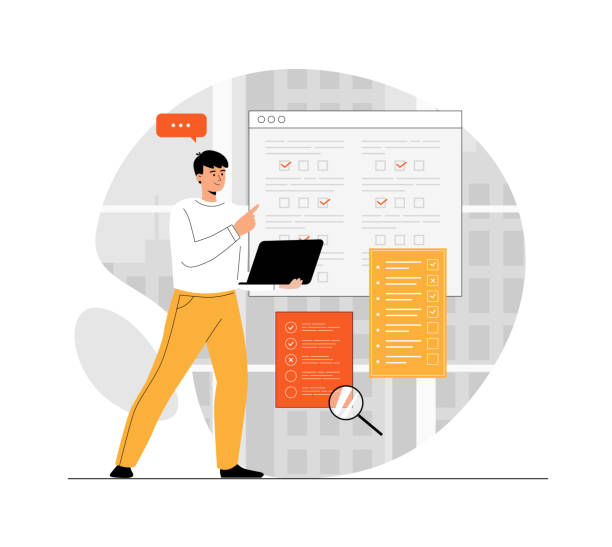
After choosing the platform, the next crucial step in personal website design is paying attention to the principles of visual design and user experience (UX).
The aesthetics of your website make the first impression on visitors and play an important role in keeping them on your site.
A beautifully designed and user-friendly website not only looks professional but also encourages visitors to browse more and engage with your content.
This specialized guide includes tips for optimizing your site’s appearance and performance.
Colors, fonts, images, and whitespace all play a role in creating a pleasant visual experience.
Choosing a color palette that aligns with your personal brand, using readable and appropriate fonts, and utilizing high-quality images are among the things you should pay attention to.
Furthermore, User Experience (UX) refers to the ease of use of your website.
The website should be easily navigable, and visitors should be able to quickly find the information they need.
Clear menus, distinct Call-to-Action buttons, and logical page layouts all contribute to improving the user experience.
Also, Responsive Design is of paramount importance.
This means your website should display correctly on all types of devices, including desktops, tablets, and smartphones.
Website loading speed is also a critical factor; a slow site can drive visitors away.
Optimizing images, using caching, and choosing suitable hosting are ways to improve speed.
Paying attention to these details in building a personal website not only enhances its aesthetics but also ensures its efficiency and effectiveness.
Essential Features for Every Personal Website: What You Must Have
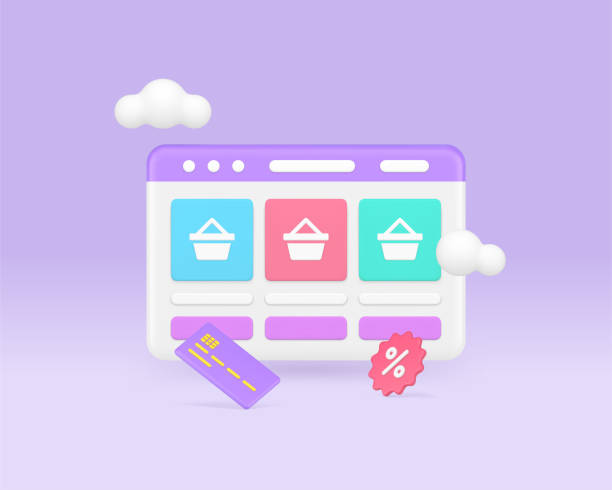
When designing a personal website, beyond beautiful aesthetics, you should also pay attention to key functionalities and features that make your website efficient and professional.
This section explains which elements are essential for a successful individual online presence.
First, the “About Me” or “Biography” page is of particular importance.
This page is an opportunity to tell your story, share your experiences, and showcase your personality.
Visitors want to know who they are dealing with, so use this space to build a personal connection.
The second vital feature, the “Portfolio” or “Projects” section.
If your website is for showcasing your skills or services, this section is a place to display your best work with images, descriptions, and even links to live projects.
This helps visitors evaluate the quality of your work.
A clear contact form or clear contact information is another feature that should not be overlooked.
Visitors should be able to easily get in touch with you.
Providing various ways to contact, including email, phone number (optional), and links to social media, builds their trust. If you plan to publish articles or updates, a blog section for sharing your thoughts, expertise, and perspectives is very valuable.
This section also helps with your website’s SEO.
A search bar (if you have a lot of content), social sharing buttons for your content, and ensuring the website is mobile-friendly are also important features.
The more user-friendly and complete your website is, the greater its impact will be in the personal website design process.
Finally, ensuring high loading speed and website security are also necessities that build user trust.
Search Engine Optimization (SEO) for Your Personal Website: Increased Visibility
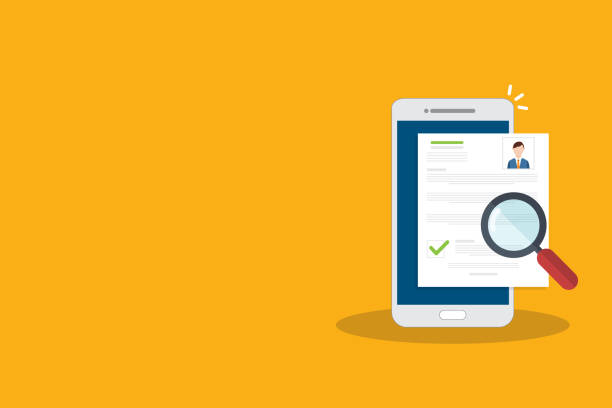
After completing personal website design, the main question is: how will people find your website? This is where Search Engine Optimization (SEO) comes into play.
SEO is the process of improving your website’s ranking in search engine results like Google to attract more traffic.
This specialized and educational section provides practical guidelines for increasing the visibility of your individual online presence.
First, identify keywords related to your field of work or expertise.
Use these words naturally in your titles, headings, and body content.
However, avoid Keyword Stuffing, which can harm your ranking.
Second, producing high-quality and valuable content is very important.
Google favors content that is useful to users and answers their questions.
Regular blogging and providing unique information greatly contribute to improving your SEO.
Third, technical site optimization, such as loading speed, mobile compatibility, and using HTTPS (secure protocol), is important.
Search engines give higher scores to fast and secure websites.
Fourth, building internal links between your website pages and also striving to acquire backlinks from other reputable websites can increase your site’s credibility.
These links indicate that your content is valuable.
Finally, using meta descriptions and title tags for each page, helps search engines better understand your content and display it to users in search results.
Below is a table of the initial SEO checklist for personal websites:
| SEO Item | Description | Importance |
|---|---|---|
| Keyword Research | Finding words your audience searches for. | High |
| Quality Content Production | Writing useful and engaging articles and texts. | Very High |
| Technical Optimization (Speed, Mobile) | Ensuring correct and fast website performance. | High |
| Link Building (Internal and External) | Creating connections between pages and acquiring backlinks. | Medium to High |
| Title Tags and Meta Descriptions | Writing engaging texts for display in search results. | Medium |
By adhering to these tips, you can ensure that your personal site build is not only beautiful but also well-visible in search engines, attracting targeted traffic.
Maintaining and Updating Your Personal Website: Ensuring Dynamism and Security

After the personal website design process is completed and your site is launched, the work is not over.
Regular maintenance and updates of the website are as important as the initial design itself.
This section of the article provides guidelines for maintaining the dynamism, security, and optimal performance of your personal website.
One of the most important aspects is website security.
Hackers are constantly looking for vulnerabilities in websites, so you must ensure that your platform, theme, and plugins are always up-to-date.
If you use WordPress or any other CMS, install software updates as soon as they are released.
Also, using an SSL certificate (HTTPS) to encrypt communications and increase user and search engine trust is essential.
Regular website backups are also a vital practice.
In case of any technical issues, cyberattacks, or human error, having a backup allows you to quickly restore your website.
You can do this manually or by using plugins and automated tools.
In addition to security, website content should also be regularly updated.
Adding new articles to the blog, updating your portfolio with the latest projects, and reviewing contact information and biography all help maintain your site’s freshness and relevance to your audience.
These continuous updates not only bring visitors back to your site but are also considered valuable by search engines and help with your ranking.
Regularly checking website performance for loading speed and the presence of Broken Links is also important.
Broken links degrade the user experience and can harm SEO.
Active and continuous maintenance ensures that your individual web presence is always at its best and effectively meets your goals.
Disappointed by your e-commerce website’s low conversion rate? Rasawab transforms your e-commerce website into a powerful tool for attracting and converting customers!
✅ Significant increase in visitor-to-buyer conversion rate
✅ Unparalleled user experience to boost customer satisfaction and loyalty⚡ Get a free consultation from Rasawab!
Beyond a Simple Showcase: Earning Income and New Opportunities from Your Personal Website
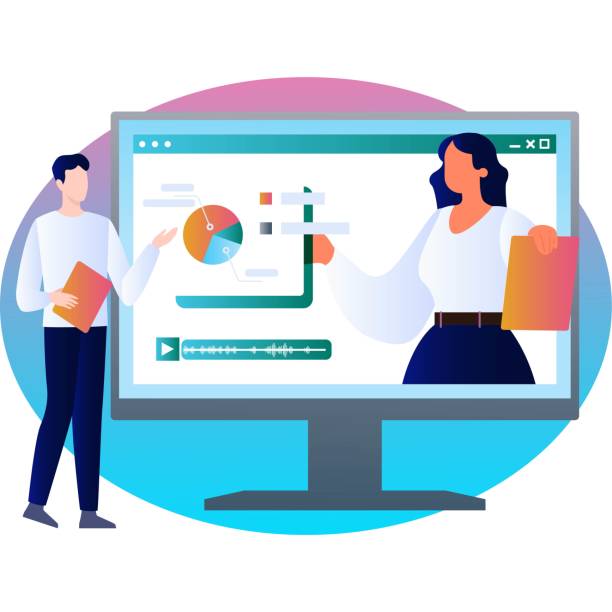
Did you know that personal website design can go beyond a simple showcase for your resume or portfolio? In fact, your website has the potential to become a source of income and a platform for creating new opportunities.
This engaging and somewhat informative content shows you how you can monetize your online presence.
One of the most common ways is Affiliate Marketing.
If you write on your blog about products or services you use or believe in, you can include affiliate links to these products and earn a commission with each sale or referral.
Another way is to sell your own digital or physical products.
If you are an artist, you can sell your works; if you are an expert, you can offer online courses or e-books.
A personal website with e-commerce capability provides a suitable platform for this.
Also, if you produce valuable content, you can use Google AdSense or other advertising networks.
Although the income from this method is usually not large, it can help cover website maintenance costs.
Providing consulting or coaching services is also possible through a personal website.
By showcasing your expertise and portfolio, you can gain the trust of potential clients and register for your consulting sessions or training courses.
Even many successful personal websites generate income through Sponsorship from relevant brands.
These opportunities show that building a personal site is not just about display, but can transform into a revenue-generating and opportunity-creating hub.
With creativity and proper planning, your website can become a valuable asset in your work and life.
The Future of Your Online Presence: Personal Website as the Main Hub

In a world where social networks are constantly evolving and their algorithms can instantaneously affect your visibility, personal website design is gaining increasing importance as a primary and stable hub for your online presence.
This analytical section addresses the future of your digital presence and highlights the central role of a personal website.
While social platforms are excellent for daily interactions and rapid content dissemination, they are never a complete substitute for your personal website.
Your website is your digital land and home, where you have complete control over your content, data, and communication with your audience.
This allows you to develop your identity and brand without depending on the rules of other platforms.
The future of online presence is moving towards personalized digital ecosystems where your website is the central core.
From this core, you can disseminate your content to various platforms (such as publishing blog posts on social media) and then bring traffic back to your website.
This strategy helps you maintain control and ensure that your audience always has access to your primary source of information.
Furthermore, with advancements in technologies like artificial intelligence and virtual reality, personal websites will also evolve.
We may witness more interactive websites, more personalized user experiences, and even three-dimensional presences in the web space.
Investing in building a personal site today means preparing for this future and securing your place in the digital landscape.
It is a long-term tool for personal and professional success that allows you to tell your story, share your expertise, and create meaningful connections that transcend the lifespan of any social platform.
Frequently Asked Questions
| Question | Answer |
|---|---|
| Why should I have a personal website? | A personal website helps you build your personal brand, showcase your skills and portfolio, connect with your audience, and gain new career opportunities. |
| What steps should be taken to design a personal website? | The steps include defining the goal, choosing a domain name and hosting, selecting a platform (e.g., WordPress), designing the user interface, content creation, optimizing for search engines (SEO), and launching. |
| Do I necessarily need to know coding to design a personal website? | No, by using Content Management Systems (CMS) like WordPress or Website Builders like Wix and Squarespace, you can design your website without needing to code. |
| What is a Domain Name and how do I choose one? | A domain name is your website’s address on the internet (e.g., yourname.com). It’s best to choose a short, memorable name relevant to you or your business, with an appropriate extension (like .com, .ir). |
| What is Hosting and why do I need it? | Hosting is a space on the internet where all your website files and information (such as images, texts, codes) are stored to be constantly accessible to users. Without hosting, your website will not be visible. |
| What should personal website content include? | Content typically includes an About Me page, Portfolio, Services/Skills, Blog (articles), Contact Information, and a contact form. |
| How can I optimize my personal website for search engines (SEO)? | By using relevant keywords, producing high-quality content, improving website loading speed, being mobile-responsive, building internal and external links, and optimizing title tags and descriptions. |
| Why is Responsive Design important for a personal website? | Responsive design ensures that your website displays correctly on all devices (computer, tablet, mobile) and provides a good user experience, which is also important for SEO. |
| What should I do for personal website security? | Use an SSL certificate (HTTPS), regularly update platforms and plugins, use strong passwords, perform regular backups, and install firewalls or security plugins. |
| How can I increase my personal website’s traffic (visitors)? | Through SEO optimization, content marketing (blogging), social media activity, email marketing, online advertising, and collaboration with other websites. |
And other services of Rasa Web Advertising Agency in the field of advertising
Benefits of B2B targeting in medical product advertisements
Impact of product introduction videos on the attractiveness of medical advertisements
How to highlight after-sales services in classified ads
Creative ideas for designing medical product advertisements
The role of discounts in the success of medical product sellers’ advertisements
And over hundreds of other services in the field of internet advertising, advertising consulting, and organizational solutions
Internet Advertising | Advertising Strategy | Advertorial
🚀 Are you ready to revolutionize your business in the digital space? Rasaweb Afarin Digital Marketing Agency, with years of experience and expertise in professional website design, SEO, and comprehensive digital strategies, offers innovative solutions for your sustainable growth and success.
📍 Tehran, Mirdamad Street, next to Bank Markazi, Southern Kazeroon Alley, Ramin Alley, No. 6

